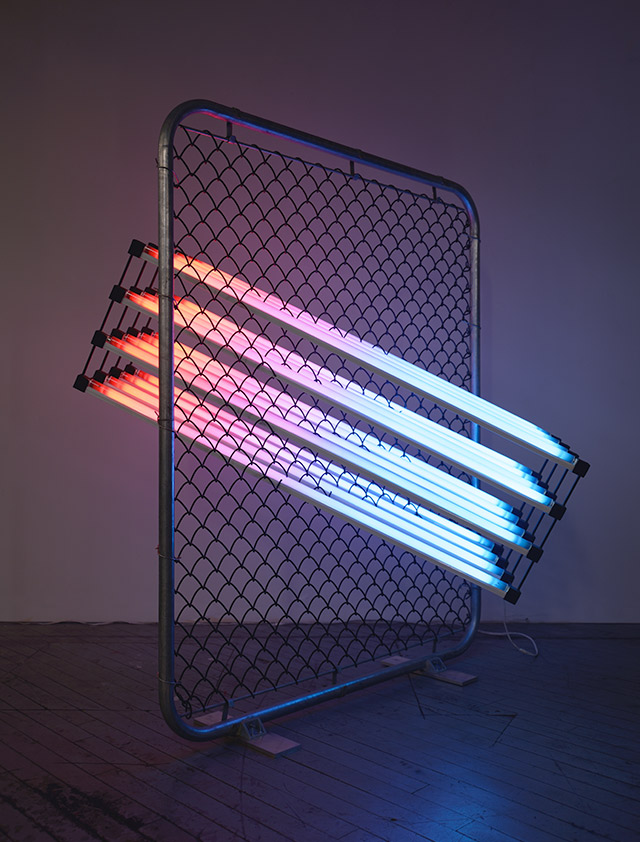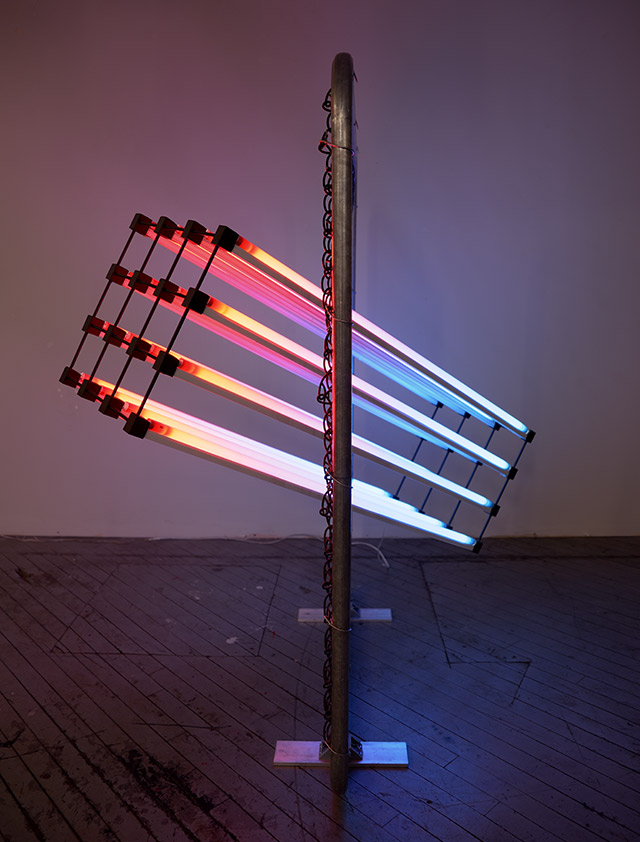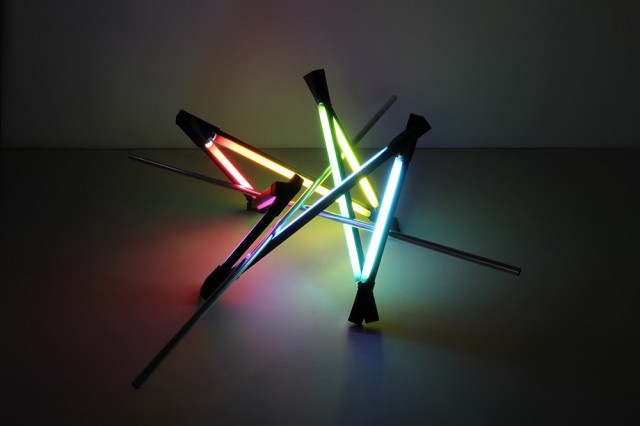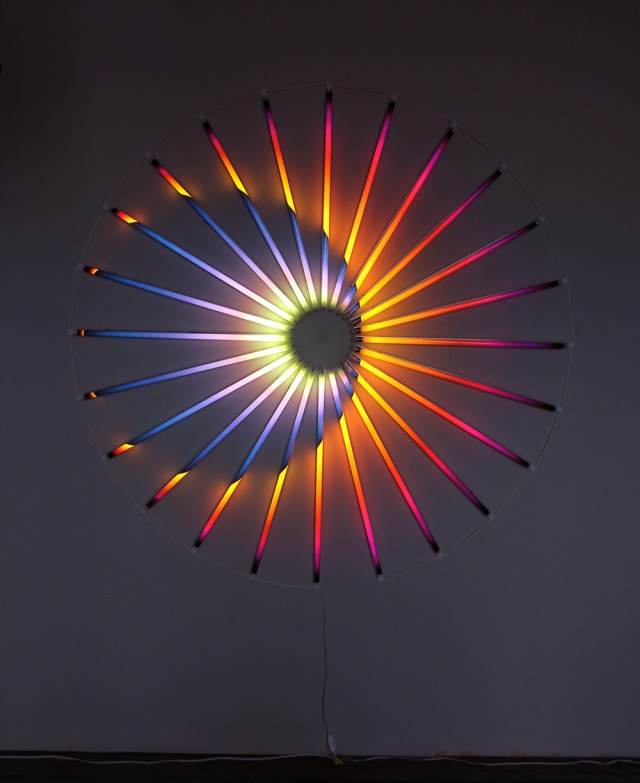INHALE is a cultural platform where artists are presented, where great projects are given credit and readers find inspiration. Think about Inhale as if it were a map: we can help you discover which are the must-see events all over the world, what is happening now in the artistic and cultural world as well as guide you through the latest designers’ products. Inhale interconnects domains that you are interested in, so that you will know all the events, places, galleries, studios that are a must-see. We have a 360 degree overview on art and culture and a passion to share.

James Clar’s work is an analysis and observation on the affects of media and technology on our perception of culture, nationality, and identity. His interest is in new technology and production processes, using them as a medium, while analyzing and critiquing their modifying affects on human behavior.
Technology allows for new forms of communication; however every system enhances certain types of communication while limiting and simplifying others. It’s these modulated effects and alterations to our perception that has become thematic focus to his works, whether dealing with socio-political issues or inward personal emotions.
(An array of lights intersect through a fence at an angle, with the colors visualizing hot air rising and cold air sinking. This work visualizes what is invisible, air, and shows it passing through a fence, letting the viewer think about air as a substance that fills all open spaces and travels through fences, borders, etc.)
Originally studying film and animation at New York University; at graduate school (NYU’s Interactive Telecommunication’s Program), he came to view televisions as light systems and their own medium. Instead of relying on this set system, he started to develop his own visual systems by controlling and manipulating light itself. These light works became a physical extension of the pixel beyond the screen, pixels that created three-dimensional sculptural form.
(A piece that references the spatial information of three dimensional objects. The steel beams create a grid XYZ reference point in which a jagged line move through ( Up, Down, Left and Right ) spatially plotting coordinates to create a three dimensional form. The lights are filtered to run through the spectrum of colors, alluding to the various colors an object might be.)
In 2007 James moved to Dubai and lived there till 2012. In the five years living there he became an active participant in the development of the arts and culture scene of the globalized city. While his early work dealt with analyzing how technology and media work, his experiences in the Middle East saw his focus shift to how technology and media affect. This included themes of nationalism, globalism, and popular culture in the age of mass information.
In 2012 James moved his studio back to New York where he currently lives and works.
(A visualization of the sun from two different perspectives on earth. One showing the sky with the sun setting and the other showing the sky with the sun rising. This work compresses the timezones between the two perspectives and focuses in on a single object viewable from both places; the sun.)
Synesthetic Timeline at Frankfurt Airport
(2013)
Steel, Acrylic, LEDs, Cables, Microphones, Computers
3m x 26m
“Synesthetic Timeline” is a permanent installation in the Fraport headquarters in Frankfurt Germany. It consists of two audio interactive light installations that convert live sound into geometric lines of light.
These two large wall pieces monitor the live ambient noises in the lobby and translate them into light animations that travel up the (elevator) walls. The bottom of the wall displays the current sound levels, which then move up the geometric structure, allowing people to see the sound and a visual chronology of sound in the space. The installation changes and morphs according to the sound activities in the building environment and as planes fly overhead.
*Additional programming and system design with Kentaro Okuda

Cell Division
Cell Division (Tensile) (2012)
150cm x 90cm x 90cm
Fluorescent lights, acrylic tubes and light filters
(Two spherical tensigrity structures are connected and mirror each other, recreating the moment of cell division through geometric, structural lighting.)
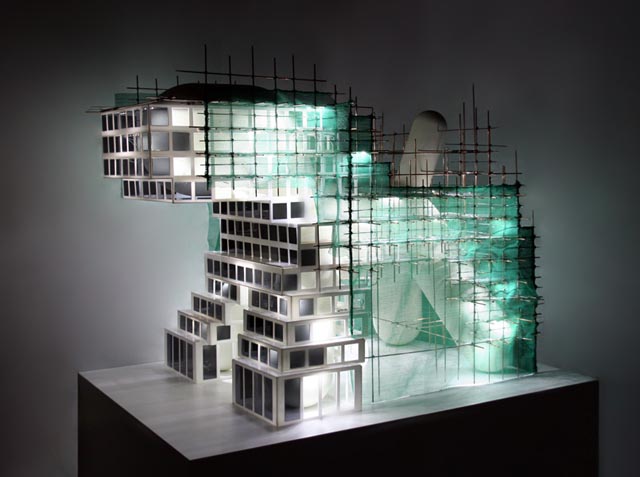
Got Recession
(2010)
100 cm x 80 cm x 60 cm
Magis ‘Puppy (XL)’, Brass Rod, Steel Rod, Acrylic, LED lighting
Edition of 2 + 1 AP
(“Got Recession” is the artist’s version of architecture in Dubai at the height of the economic boom, and then forwarded a few months to the global recession, leaving a half-finished architecture skeleton. Scaffolding still surrounds the building and at night the lighting glows internally. Similar to many projects put on hold in Dubai, the lights were kept on at night, until the project was finally cancelled and the lights went off.)
(Versace Suit, Mannequin, FL tubes, Acrlyic
Created for The Singular Suit exhibition at Somerset House, London. Organized by and featured in Esquire Magazine.
18 major fashion designers were asked to select an artist or designer to collaborate in re-imagining the classic suit. The following are the list of collaborations.)
Among the artist’s wide range of pieces, it’s possible to focus on his light installations as stand-alone pieces or, better yet, as a solid body of work. Experimenting with an assortment of materials such as acrylic, metal and fiberglass and, obviously, fluorescent lights, Clar skillfully showcases numerous subject matters: from symbolic reductions or augmentation of an event, form experimentations, pattern replications, to sophisticated criticisms of the pitfalls of daily technology and information.
The extension of a pixel beyond the screen limits to become a complex three dimensional work is one of the many insights from the artist, an exploration of his extensive library is well recommended for media critique and installation art enthusiasts.
Currently displaying wprks at: Rockaway!, MoMA PS1 / Honolulu Biennial, New York
Big Bang Data, Center for Contemporary Culture (CCCB), Barcelona
The Language of Human Conciousness, Athr Gallery, Jeddah
They Sicken Of The Calm Who Know The Storm, Fridman Gallery, New York
OnScreen, Carroll / Fletcher, London
via jamesclar.com and trendland.com



